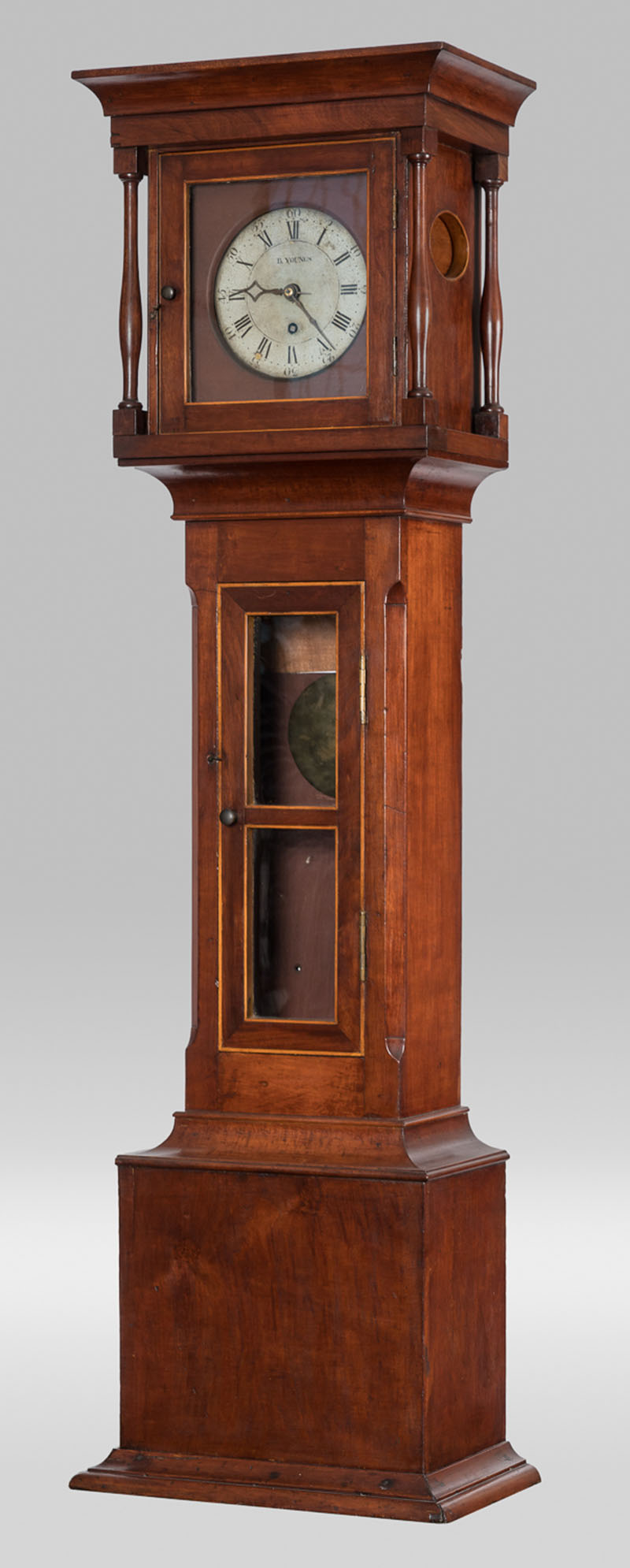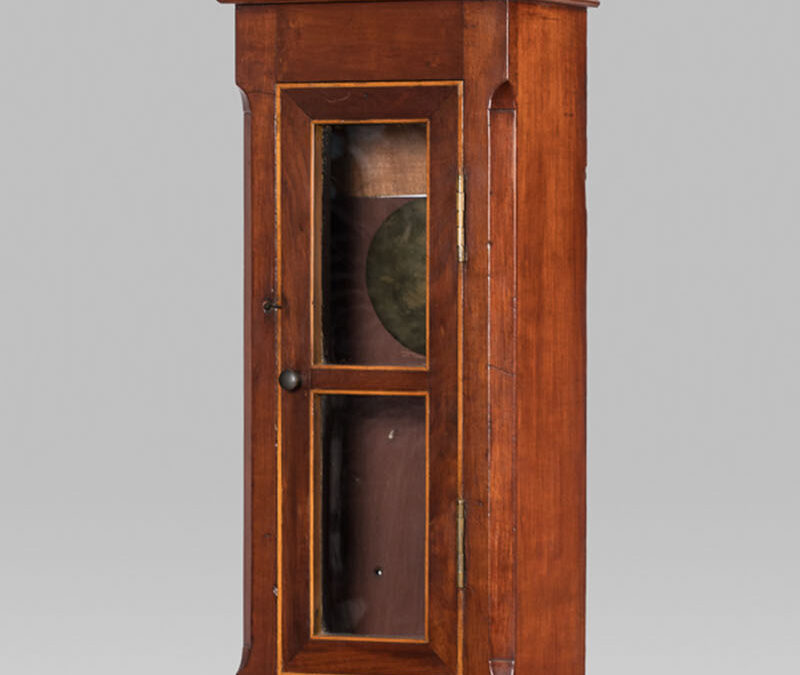Dwarf Case Clock

| Maker | Movement by Benjamin Youngs, Watervliet, New York, 1812 Case by William Knowles, South Union, Kentucky, 1835 |
| Date of Creation | 1812 / 1835 |
| Location | Watervliet, New York / South Union, Kentucky |
| Materials | Cherry, pine, maple |
| Institution | South Union Shaker Village |
| Credit Line | South Union Shaker Village |
| Accession Number | 94-1 |
| Photo Credit | Bill Roughen for Speed Art Museum |
The only surviving case clock from the South Union Shaker village, this diminutive example falls into the category of “dwarf” case clocks. Standing only 57 inches in height, its manufacture is well-documented. The movement was made by the foremost Shaker clockmaker, Benjamin Youngs, Sr. (1736–1818), completed on October 4, 1812. Youngs joined the Shakers at Watervliet, NY, in the 1790s, already trained as a clockmaker by his father, Seth Youngs, Sr. (1712–61). Youngs’ nephew, Benjamin Seth Youngs (1774–1855), was one of the missionaries who brought the Shaker faith from the Northeast to the “West” in 1805. B. S. Youngs helped establish villages in Indiana, OH, and Kentucky and was eventually assigned to the role of Elder at South Union. In his possession, most probably, were the brass works of a clock made by his uncle. According to South Union manuscript records dated April 1, 1835, a “Little Brass Clock – [was] put in a new cherry case by William Knowles.” Knowles joined the Shakers as an adult in 1833, bringing with him obvious knowledge of the cabinetmaking trade and the styles being employed outside Shaker villages. The result of his efforts was a clock case that closely resembled those made in the Southern Kentucky and Middle Tennessee region, not the plain, unadorned cases in which Youngs Northern clocks were encased. Close inspection reveals that this clock, from top to bottom, may have originally been painted chrome yellow. The interior of the trunk is still coated with what appears to be original red paint that covers the surface as far as the painter could reach, indicating it was accomplished after the case was completed. The interior side of the door reveals the brilliant chrome yellow.

